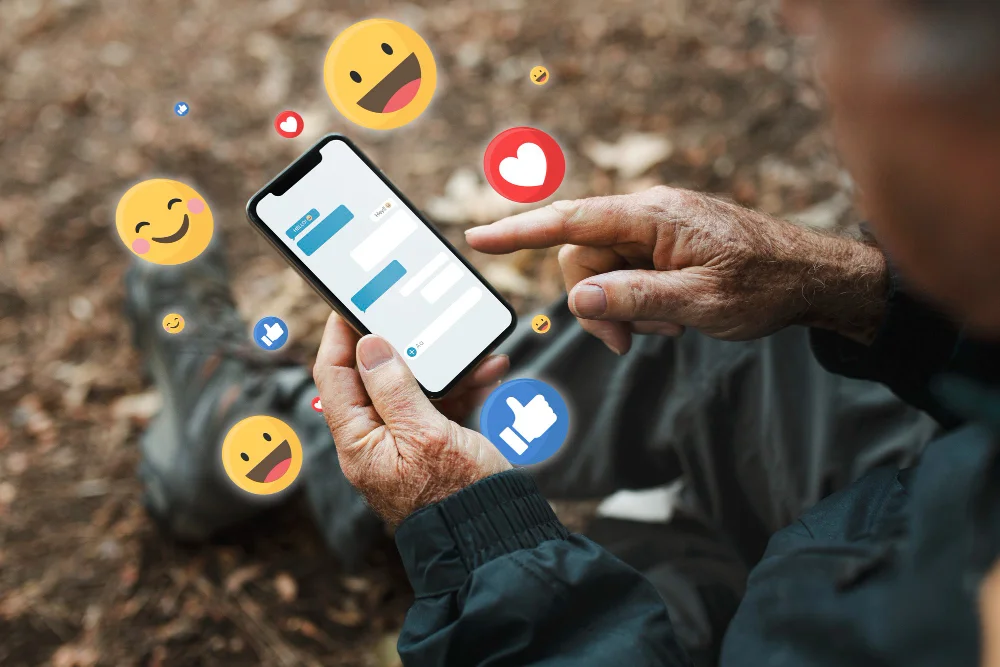Share Posts

Web3 in Healthcare Use Cases and Benefits
78
6932
103
Imagine a medical field where the combination of Web3 and its incredible components work together to foster a patient-friendly atmosphere. The growth of Web3 in Healthcare has opened the door for the use of innovative ideas to be implemented in it. Web3 is revolutionizing the industry.
Web3 in Healthcare
Web3 backed by blockchain technology is a decentralized network that allows users to interact without the interference of central authorities. It has the power to return control of the data to the users who ought to have been the data owners. Unlike other centralized networks where the data are always at risk, Web3 ensures the security and privacy of the users.
Healthcare is one of the industries where Web3 has worked its magic with immersive technologies and features. Technologies that are continuously being developed to make human tasks easier always come with several risks associated with them. Web3 demonstrates its growth and significance in healthcare through the continual development of its wide range of services and solutions.
Issues with adopting Web2 in Healthcare
Although Web2 remained a major force in renovating the traditional method of healthcare systems with the help of its technologies such as telehealth, telemedicine, mhealth, etc, it has its shortcomings. Since Web2 is vulnerable to data breaches and phishing attacks, healthcare businesses with poorly protected websites, servers and databases can be easily targeted by cybercriminals.
Outdated medical devices and systems without the most modern threat defenses, a lack of clearly defined cybersecurity rules and procedures, and inadequate cyber awareness can all contribute to data risk. Cybercriminals can make use of those opportunities and exploit vulnerable databases to demand a ransom by hacking them.
The infrastructure and business processes of the victim organization will be taken down to isolate the damage, investigate, and restore it to a working state. Additionally, it closes off access to the amazing use cases that are only feasible with Web3.
Why use Web3 in Healthcare?
Web3 has come as a savior to the problems encountered in Web2. It is more accessible and user-friendly by enabling the patients to take charge of their healthcare journeys. It helps many organizations attain their goal which is to increase the security and quality level of online healthcare services. It gives us a more equitable internet that will allow us to operate applications anywhere in the world on a decentralized platform with higher capabilities and fewer data breaches.
Distributing ownership to the users, enables the healthcare ecosystem to be patient-centric and decentralizes data. With its distinctive components such as blockchain, metaverse, and artificial intelligence, it paves the way to take the already existing digital healthcare to the next level by making it look engaging and a life-like environment. With Web3 in healthcare, it is now easy to enter patients’ medical data into an immutable digital ledger which prevents them from being altered.
The way patients manage and organize their medical records and data has changed with the advent of Web3 in Healthcare. It will be more evident why Web3 is required in healthcare after examining some of the benefits, features, and use cases listed below.
Features of Web3 in Healthcare
The faultless characteristics of Web3 demonstrate how it transforms conventional medical processes while maintaining high standards. A list of some of the most important traits is provided below.
Remote Monitoring
Doctors can monitor patients at home with the use of remote monitoring. It has demonstrated efficacy in treating both common ailments and short-term illnesses. Because IoT data is gathered and processed centrally by remote monitoring devices, hackers cannot access it.
Cross border payments
Since each country has its own rules, taxes, and regulations, performing operations in those countries might be challenging. However, the introduction of cryptocurrencies has resolved this issue by enabling medical professionals to practice internationally and take payments from any location without any payment-related problems.
Digital healing
With the advent of Web3 in healthcare, patients are now able to participate in online virtual health communities where they can talk about and share their problems with other patients or doctors. They can recover on their own by utilizing the internet to find solutions to health problems, aid with problem-solving, and get mental support and relief.
Digital twinning
As a digital twin, a person's computer-generated image, typically in the form of an avatar, can take the place of a patient in a clinical setting to aid in research. By creating a realistic copy of a patient’s organs, scientists can more properly examine diseases and discover how treatments work on humans while saving money on research projects.
Personalized patient care
To get assistance with diagnosing diseases, providing individualized treatment options, and enhancing patient outcomes, Healthcare professionals are increasingly turning to artificial intelligence, one of the Web3 components. It also facilitates the provision of personalized care for patients with various diagnoses.
Web3 Use Cases in Healthcare
Web3 has already entered the action by extending its creative methods across several industries. The following are the main Web3 use cases in healthcare that can completely transform the industry by revolutionizing its processes.
Data management and ownership
Web3 is mostly employed for proper data management. Patients’ health records are stored on the blockchain using smart contracts. To get access to the data, doctors must have a public key which is owned only by the patients. Along with securing data and making them its owner, Web3 offers patients an option to share their keys with healthcare professionals whenever needed.
Data security
The way that healthcare data is now managed is susceptible to security flaws and is readily hackable. The centralized servers must be trusted too much, and patients expect services to protect their data and adhere to privacy laws. The data in the blockchain is spread among nodes which is hard for a hacker to hack, alter or delete the data. It would need patients’ consent to get access. By employing Web3 in healthcare, one can securely keep sensitive information without worrying about data breaches. No one can access, misuse or sell anybody’s private data without their permission.
Medical training
Medical students need to practice on corpses, which involves ethical laws and issues. But with Metaverse technologies, medical training institutions can make use of technologies like augmented reality and virtual reality to teach students about human anatomy, prepare for surgeries and diagnose illnesses.
Students can explore a 3D image of cellular-level details of the human body and be stimulated by real-world procedures using Metaverse. Without any risk factors, 3D visualization helps to provide an immersive experience, social communication, and an engaging atmosphere. Before doing actual operations, students can practice their skills by performing virtual surgeries in the metaverse.
Monetization and patient medical records
If web3 technologies are used for managing and keeping track of medical records, patients will be able to sort and arrange all of their records in one location. If they go to another healthcare provider, they can still access the patient file. They can avoid carrying their documentation with them and explaining their medical history to many doctors this way.
The data can be converted into NFTs and then stored in the blockchain. By transforming their medical records to NFTs, patients can make money off of them. Since nobody other than the patient has access to these traceable NFTs, they can sell them to doctors or other people who want to use the information for their medical research.
Drug counterfeit control
The healthcare sector is increasingly concerned about pharmaceutical counterfeiting since the pharmaceutical supply chain lacks transparency. The original drug is tampered with and counterfeited by illegal drug producers, resulting in drugs that have less of the necessary ingredients or active substances that aren't listed on the label. This may harm the patient's health and make their condition worse. The threat of counterfeit medications is being addressed by drug manufacturers, yet illegal producers discover ways to pass off their goods as real medicines.
Blockchain guarantees the distribution of pharmaceuticals with accurate and high-quality manufacturing data. Additionally, it aids in preventing the shipment of expired goods. Blockchain can do away with the time-consuming paperwork needed to enforce rules in the pharmaceutical supply chain.
Until they are delivered, vaccines and medications can be tracked and observed using blockchain technology. Each product's unique barcodes guard against unauthorized access and hacking. The encrypted barcodes need to be scanned to confirm a medicine's legitimacy. Additionally, it ensures that the pharmaceuticals are made following the rules and specifications that control the manufacturing process.
Surgical operations
The metaverse, which integrates a variety of technologies like AR, AI, VR, 3D reconstruction, blockchain, and more, provides a distinctive ecosystem for performing operations. Through the metaverse, patients who require surgery but do not necessarily have access to it in their home country can work with surgeons from around the world. The doctors can then formulate a strategy by reviewing the patient profile and selecting the best course of action. Through Metaverse, renowned surgeons can work with surgeons from another place to guide them.
Gamification
The use of health games can assist patients in adhering to the guidance provided by the virtual instructor, and the integrated motion sensor will assess the patient's performance to determine whether their health has improved. The goal of gamifying healthcare is to increase patient accountability for their health and involvement. Gamification may transform laborious exercise and dull tasks into enjoyable hobbies. It helps in keeping patients enthusiastic and energetic.
What are the Benefits of Web3 in Healthcare?
Since Web3 has its foundation on the blockchain that offers effective security, numerous businesses have begun utilizing them by providing consulting branches in healthcare organizations to enhance their operations. Given that it provides the following advantages, it has become essential to address the issues that have dogged the healthcare system.
Security
By employing blockchain in Web3, all data transfers and transactions can be encrypted from beginning to end. One can approve the request only using the transaction ID, which is the only thing they can see. No one will have access to anybody’s data.
Transparency
It can enable transparent and decentralized communities managed democratically via smart contracts. Patient regulation prevents unauthorized users from accessing the network and patients would be given control over their care through the use of a patient-centered model.
Patient centricity
Healthcare organizations can concentrate more on patient care by utilizing technologies of Web3 rather than spending so much time on maintaining and storing information. They can focus on looking after patients’ needs and planning diet charts according to their health conditions.
Self-correction
Patients can make sure the data kept about them is accurate and correct by giving them access to their medical records. It also allows them to keep a check on their medical status and schedule their visits accordingly.
Accountability
Web3 encourages healthcare organizations to earn loyalty and trust from the patients by making themselves accountable without any hesitation. Also, it enables patients to follow up on their medical status.
Future Scope of Web3 in Healthcare
With the advent of Web3, proactive healthcare is entering a new era where we can trade and learn from our data. It gives us a more equitable internet with fewer data breaches, more freedom, and a better ability to run applications on a decentralized platform. It moves us toward the natural evolution of the internet where we can combat the issues of user privacy and information leakage.
Along with securing information, Web3 also opens doors for patients to trade their data in the form of NFTs. Web3 hasn't limited its focus to just one aspect of healthcare. To address the problems that are present in the current system, it has set foot everywhere.
Web3 integration in healthcare can support the upkeep of a structured data management system and give users back control over their data. The healthcare ecosystem will eventually become visible, approachable, and traceable thanks to the distributed, customized, and traceable data stored in Web3.
Conclusion
The race to fully utilize Web3's capabilities has started. Although its effects are still being seen, it will undoubtedly be for the better, and patients everywhere will gain from the next stage of the internet's development. To make the future of the healthcare business vibrant, it is necessary to comprehend and work with the concept of Web3 as the approach to healthcare is drastically moving in favor of improvement.
Being the top provider of Web3 technology, Maticz can create efficient solutions for your healthcare company because we have in-depth expertise and years of experience in the field. Any degree of complexity in Web3 development projects can be managed by our professionals. Our team of experts conducts market research before project design and employs special techniques till we obtain a good result.
Tap Into the Future
The latest insights, posts, and project updates - straight to your inbox.




